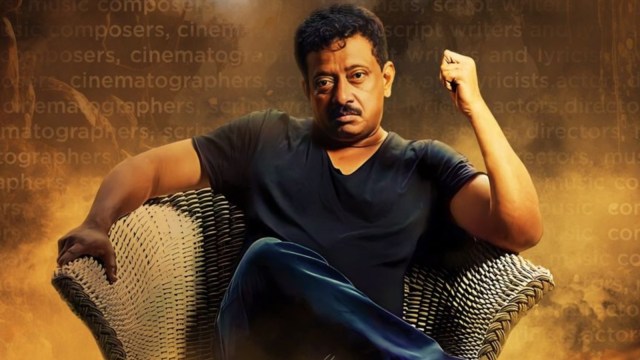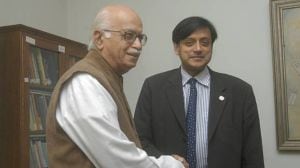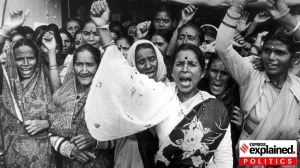Click here to follow Screen Digital on YouTube and stay updated with the latest from the world of cinema.
Ram Gopal Varma dissects economics of pan-India projects, explains why some big multi-starrers fail: ‘These are proposal films mounted for star’s ego’
Ram Gopal Varma said films with calculated pan-India casting have 'nothing wrong in theory,' but history is proof that such projects often nosedive.
 Ram Gopal Varma says making mythological movie is dangerous. (Photo: Ram Gopal Varma/Instagram)
Ram Gopal Varma says making mythological movie is dangerous. (Photo: Ram Gopal Varma/Instagram)Filmmaker Ram Gopal Varma says the industry is witnessing many “proposal films” which are assembled by calculated pan-India casting to cater to a wider audience. These films, RGV said, often focus on pandering to the egos of the stars while the story becomes secondary.
In an interview with Galatta Plus, the filmmaker explained why some multi-starrer pan-India films feature stars from different regions, as the producers think this would make more monetary sense. While there is “nothing wrong in theory,” Varma said history is proof that such projects often nosedive.
RGV said, “These are called ‘proposal films’, because you are calculating– if this actor comes from there, that audience will watch the film. If the other is from some other region, that audience will come. There is nothing wrong in that theory, but if you look at Baahubali, the film–conceptually, with its visuals and novelty–technically has no stars. Prabhas is a Telugu star, but it was a blockbuster in Hindi and other languages. I am sure his films worked nowhere else at the time.
“So you are spending on the film and creating a visual experience, where the audience feels they haven’t seen anything like that before. But then you say, let me get this guy from Tamil, the other guy from somewhere else. Rajamouli never did that. By doing this, you are burdening the film and to justify each star, to cater to him on a personal level and satisfy his ego, you lose your grip on the film, which is a reason many multi starrer films fail.”
Ram Gopal Varma said with Baahubali, which kicked off the now prevalent pan-India phenomenon, filmmaker SS Rajamouli proved that when things go right, one can hit Rs 1000-2000 crore mark at the box office. That made many makers ambitious, who thought they could mount films worth Rs 500 crore and push the boundary because it is still “one fourth of what Baahubali earned”.
“That is a huge safety net, because the market works on the possibility that a right note can make you reach there. Anyone who is making a film believes they are making a better film than what came before. Leap of faith is what Rajamouli did, everybody else is basically just imagining they are as good as that. Then it is a trap.”
The filmmaker explained how some stars like Aamir Khan juggle a big budget film with a smaller outing, keeping the cost of both in check according to the audience it will cater. “Aamir can do Ghajini and Taare Zameen Par in the same time period and his understanding is perfect. He told me that a Ghajini can be seen by 100 people and Taare Zameen Par maybe only 20 people. But you will look at the cost and time aspect of how much effort you have to put in. Within the 100 people, how many like it and in the 20 people, how many like it. That is the only thing he sees.”
Ram Gopal Varma said the problem is when a smaller film is burdened with big budget, as makers think it can lead to bigger profits. Citing an example of Prabhas starrer Radhe Shyam, which was a box office disaster, the filmmaker said, “It is technically a small film–they might have spent a lot of money on it–because the idea and what the film represents is nowhere near Baahubali. When a film like that doesn’t work, he will also think that maybe doing a small film might not work.
“The problem is, if you are making a small film, like Aamir’s Taare Zameen Par would’ve cost less than Rs 10 crore. But here, just because the recovery is there, they will spend more in a film where it is not required. That’s where the problem is.”
- 01
- 02
- 03
- 04
- 05


































